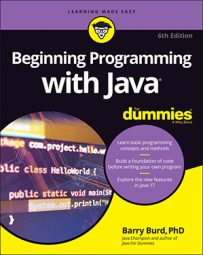- foregift (fore-gift) n.A premium that a lessee pays to the lessor upon the taking of a lease.
- hereinbefore (here-in-be-fore) adv.In a previous part of this document.
hereinbeforegiftedit
The question is, what do these letters mean? If you knew each word’s length, you could answer the question:
here in be foregift edit
hereinbefore gifted it
herein before gift Ed it
A computer faces the same kind of problem. When a computer stores several numbers in memory or on a disk, the computer doesn’t put blank spaces between the numbers. So imagine that a small chunk of the computer’s memory looks like the stuff in the image below. (The computer works exclusively with zeros and ones, but the image below uses ordinary digits. With ordinary digits, it’s easier to see what’s going on.)
What number or numbers are stored in this image? Is it two numbers, 42 and 21? Or is it one number, 4,221? And what about storing four numbers, 4, 2, 2, and 1? It all depends on the amount of space each number consumes.
Imagine a variable that stores the number of paydays in a month. This number never gets bigger than 31. You can represent this small number with just eight zeros and ones. But what about a variable that counts stars in the universe? That number could easily be more than a trillion, and to represent 1 trillion accurately, you need 64 zeros and ones.
At this point, Java comes to the rescue. Java has four types of whole numbers. You can declare
<strong>int</strong>gumballsPerKid;
You can also declare
<strong>byte</strong>paydaysInAMonth;
<strong>short</strong>sickDaysDuringYourEmployment;
<strong>long</strong>numberOfStars;
Each of these types (byte, short, int, and long) has its own range of possible values.
| Type Name | Range of Values |
| Whole Number Types | |
| byte | –128 to 127 |
| short | –32768 to 32767 |
| int | –2147483648 to 2147483647 |
| long | –9223372036854775808 to 9223372036854775807 |
| Decimal Number Types | |
| float | –3.4×1038 to 3.4×1038 |
| double | –1.8×10308 to 1.8×10308 |
<strong>double</strong> amount;
You can also declare
floatmonthlySalary;
Given the choice between double and float, you probably want to choose double. A variable of type double has a greater possible range of values and much greater accuracy.
The table above lists six of Java’s primitive types (also known as simple types). Java has only eight primitive types, so only two of Java’s primitive types are missing fromthe table above
As a beginning programmer, you don’t have to choose among the types in the table. Just use int for whole numbers and double for decimal numbers. If, in your travels, you see something like short or float in someone else’s program, just remember the following:
- The types
byte,short,int, andlongrepresent whole numbers. - The types
floatanddoublerepresent decimal numbers.

